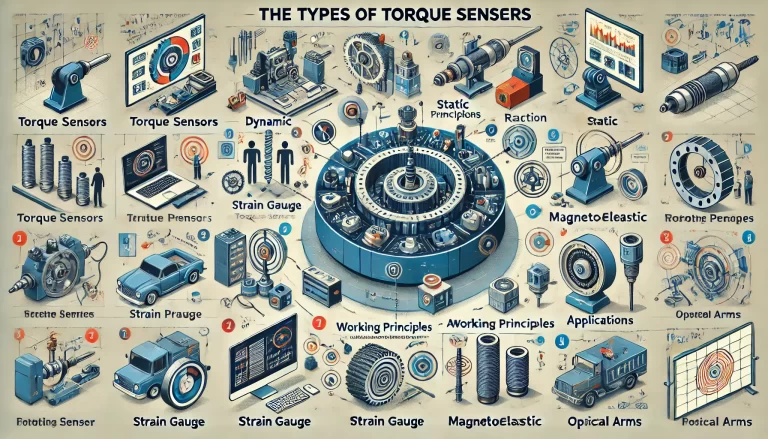Introduction
Sensor drift refers to the phenomenon where a sensor’s output deviates from the true value over time, even when the input remains constant. It poses a major challenge in industrial measurement and control applications, particularly for pressure, displacement, and temperature sensors. If left uncorrected, sensor drift can degrade system accuracy, lead to false alarms, and ultimately cause process inefficiencies or failures.
This article explores the primary causes of sensor drift, theoretical mechanisms behind it, and practical hardware/software solutions to mitigate or eliminate its effects.

1. Major Causes of Sensor Drift
1.1 Temperature Variations
Temperature fluctuations are the most common cause of sensor drift. As temperature changes, the sensor’s internal components—especially those made of different materials—expand or contract at different rates. This mismatch in thermal expansion leads to mechanical stress, resistance variation, and ultimately, signal offset.
For example, in strain-gauge-based pressure sensors, differing thermal coefficients between the strain gauge, elastic element, and substrate result in an imbalance in the Wheatstone bridge, leading to zero-point drift.
1.2 Power Supply Fluctuations
Sensor output often depends on a stable power supply. Variations in voltage can change the operating point of internal circuits, influencing the sensor’s output amplitude and stability. This is especially critical in analog sensors lacking proper voltage regulation.
1.3 Long-Term Usage and Aging
Over time, mechanical stress, corrosion, and material fatigue alter the structural and electrical properties of sensors. This aging process can change baseline values, sensitivities, or response curves. Vibration and mechanical shocks can further accelerate this degradation.
1.4 Component Aging
Aging of internal components such as electrolytes, semiconductors, or adhesives can change the electrical characteristics, including resistance, capacitance, or inductance. For example, loss of electrolyte in electrochemical sensors reduces sensitivity and introduces bias.
1.5 Environmental Influences
External conditions—such as humidity, atmospheric pressure, vibration, and light—can impact sensor stability. For instance, early pressure sensors sealed with glass-frit between silicon chips and metal bases exhibited residual stress, which, under varying thermal conditions, caused severe zero-point drift.

2. Theoretical Mechanisms Behind Drift
2.1 Semiconductor-Level Analysis
In diffusion-type resistive sensors, achieving low thermal drift requires matching doping levels and resistor values. However, uniform doping is difficult to control, making resistor layout and proximity critical to minimize offset.
2.2 Circuit-Level Analysis
The Wheatstone bridge, commonly used in pressure sensors, assumes equal resistor values in its four arms. When temperature increases, the positive temperature coefficient of diffusion resistors leads to imbalance, resulting in output drift.
3. Methods for Compensating Sensor Drift
Sensor drift can be corrected using both hardware and software techniques.
3.1 Hardware-Based Compensation
Bridge Arm Resistor Matching: Adding precision resistors in series or parallel with the bridge arms to rebalance the Wheatstone bridge.
Thermistor Compensation: Using thermistors either within the bridge or externally to offset thermal variations.
Dual Bridge Systems: Employing a second bridge to provide thermal compensation.
Transistor-Based Circuits: Leveraging temperature-sensitive transistors to dynamically correct drift.
Power Supply Conditioning: Implementing filters, regulators, and low-noise power supplies to stabilize input voltage.
3.2 Circuit Optimization
Designing circuits with temperature compensation, filtering, and signal amplification improves stability. Advanced signal conditioning ICs often include built-in drift mitigation features.
3.3 Software-Based Compensation
Zero Drift Subtraction: During periods with no valid signal, the system can measure and subtract the baseline drift.
Polynomial Fitting: Non-linear relationships between temperature and output can be modeled using polynomial regression.
RBF Neural Network Compensation: Radial Basis Function (RBF) neural networks can approximate complex non-linear functions, using fewer samples and delivering higher compensation precision.
Look-Up Tables and Interpolation: Pre-calibrated temperature vs. output data can be stored and interpolated in real-time.

Conclusion
Sensor drift is an inevitable challenge in real-world applications, stemming from material properties, aging, environmental factors, and design limitations. However, through a combination of thoughtful hardware design and advanced software compensation, drift can be effectively minimized or even eliminated. As smart sensor technologies continue to evolve, integrating AI-based compensation algorithms will become a standard approach in improving long-term accuracy and reliability.
